It's an awful moment when you realise that those itchy, red patches on your baby or toddler's cheeks, chin, or chest have become irritated, or your child has patches of dry itchy skin on their neck, inner elbows, behind the knees; and that you have eczema in your whānau.
Eczema is a skin inflammation that causes itchy, red, swollen and painful areas. It can vary from mildly irritated dryish patches, to open weeping skin susceptible to infection. It's very common - 15% of children in New Zealand have eczema - and it's not contagious, but there is no known cure; treatment is designed to heal damaged skin and alleviate eczema symptoms.
The more severe cases of eczema are often a form called Atopic Dematitis, which indicates that the immune system is involved. This type of eczema is more common in families with allergies, hayfever or asthma.
Eczema is temporary for many, and most children grow out of it. The rate drops to 9% for Kiwi adolescents and patches tend to be more localised. Half of all children with Atopic Dermatitis will grow out of the condition by the time they are adults.
We're here to do all we can to help!
Understanding eczema & atopic dermatitis
Healthy skin provides a barrier which holds in skin moisture and keeps out all sorts of irritants. If your skin can't provide an effective barrier it will lose moisture, becoming dry and itchy - and allergens, irritants and bacteria can get past your skin's barrier and cause inflammation, or even infection.
In cases of Atopic Dermatitis, there are two ways scientists think that the skin barrier is compromised, leading to flare ups:
"There is emerging evidence that inflammation in atopic dermatitis is associated with immune-mediated and inherited abnormalities in the skin barrier. This barrier failure causes increased permeability of the skin and reduces its antimicrobial function. The main inherited abnormality causing disordered barrier function is filaggrin expression. Filaggrins are filament-associated proteins which bind to keratin fibres in the epidermal cells."
"In atopic dermatitis, there is often an imbalance of the two main types of T Helper lymphocytes (small white blood cells), Th-1 and Th-2. A higher level of Th2 associated cytokines contributes to the loss of skin barrier function:
- Water is lost from the skin
- Irritants may penetrate (soap, detergent, solvents, dirt etc.)
- Allergens may penetrate (pollens, dust-mite antigens, microbes)."
Source - Dermnet NZ
What that all means is that due to immune system function and/or genetics, the skin cells don't provide the barrier protection they normally would. Microbes, irritants and allergens can penetrate the skin and cause flare ups of eczema. This is why creating a moisture barrier on the skin is so useful in helping control eczema flare ups.
How does Frankie Kawakawa Balm help?
- Kawakawa Repair Balm creates a physical moisture barrier on the skin, crucial to support and assist healing
- Our natural Kawakawa extracts contains the natural active myristicin which can lessen the pain signals sent to the brain,
- Kawakawa also contains analgesics, which can reduce pain
- The Kawakawa plant has antiseptic eugenol in its leaves to fight the bugs that cause infection, reducing skin inflammation
- Kawakawa Repair Balm contains oils, calendula, Vitamin E, and antioxidant lignins to help with general skin health and cell repair.
So Frankie Kawakawa Balm can lessen the urge to scratch, prevent skin dryness and inflammation, and help heal the skin.
Read more here about the actives in native Kawakawa.
Living with eczema - Know your eczema triggers
Learning more about what kind of eczema you have and what triggers it is key to managing it. If you are familiar with eczema and your triggers, feel free to skim this section - but if you have a new case of eczema in your whānau, we hope you will find some useful tips about what may trigger flare ups.
- changes in temperature
- allergens like dust mites, pollen, moulds or foods
- emotional stress
- environmental chemical exposure - smoke, washing powders, pesticides, synthetic cosmetic and body products
- harsh soaps that dry the skin
- tight, scratchy or synthetic clothing, wool
- for Atopic Dematitis, because it is associated with the immune system, viral infections, teething, and food allergies can upset the immune system and lead to flare ups
Once skin is irritated and itchy, the urge to scratch and rub leads to increased inflammation and itchiness.
Treatment tips for dry, itchy irritated skin
- Take lukewarm baths, and add our Colloidal Oat Soak for protective proteins
- apply Kawakawa Body Oil to damp skin right after bathing to seal in moisture
- moisturise every day with Kawakawa Balm (3 times a day initially, then once daily when the eczema flare up subsides) and Kawakawa Body Oil
- wear natural cotton and soft fabrics, and avoid rough, scratchy fibers and tight or synthetic clothing
- use a mild cleanser like our soothing Kawakawa Cleansing Bar
- air dry or gently pat skin dry with a towel - don't rub
- try to avoid fast changes of temperature and sweating
- use a humidifier in dry or cold weather
- keep fingernails short so they don't break the skin
- use natural, unscented laundry powders and household cleaning products
- and the one that may take longest - learn and avoid your eczema triggers
(Hot tip - if you want to save a little but have the benefit of all our top eczema heroes, choose the Eczema Saviour bundle.)
When to see a doctor
- if discomfort is affecting your child's sleep and daily life
- if any skin infections appear (if you see red streaks, pustules, yellow scabs or weeping skin)
- if your child continues to experience symptoms,
- or you are worried! Trust your instincts.
With love,
Georgina & Matt







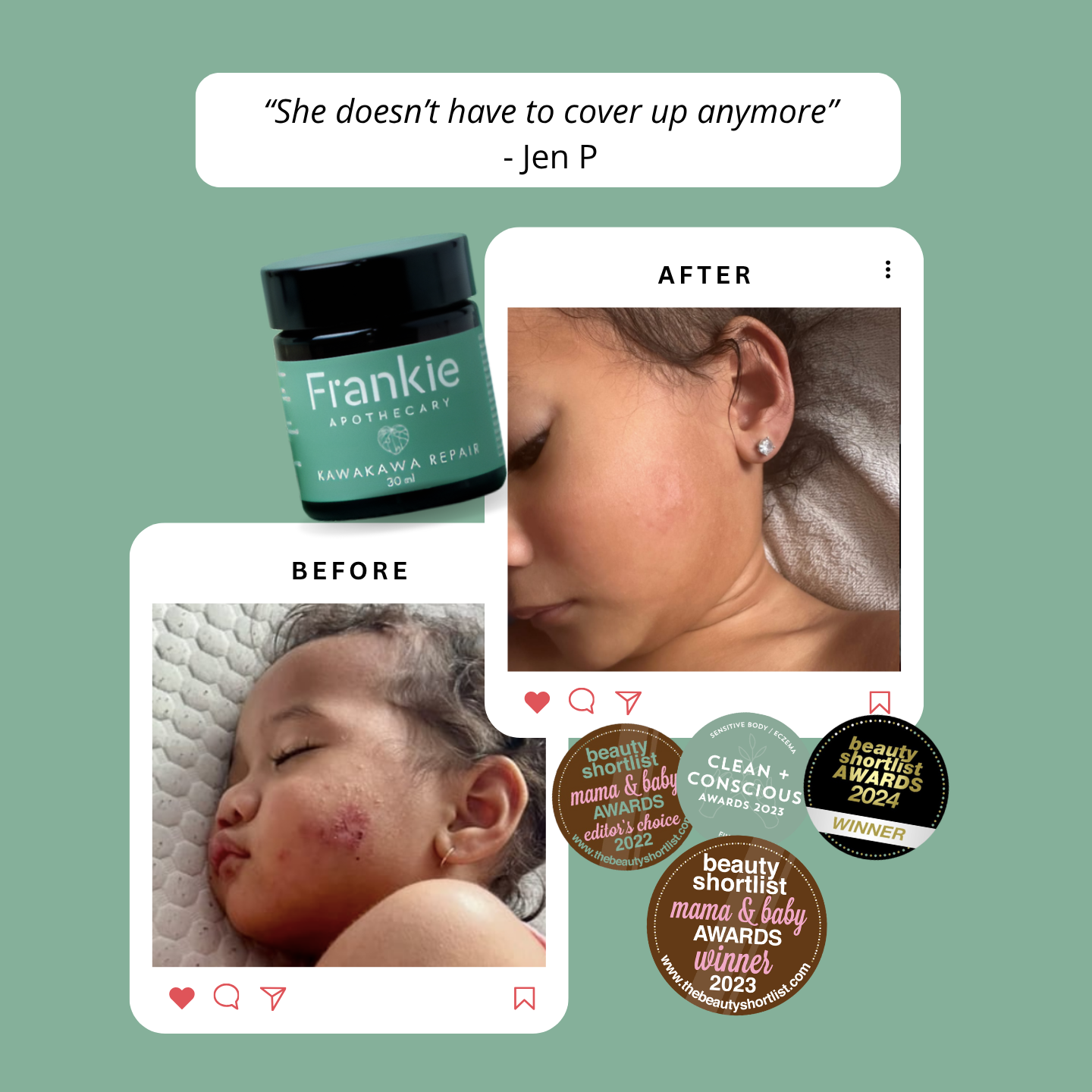
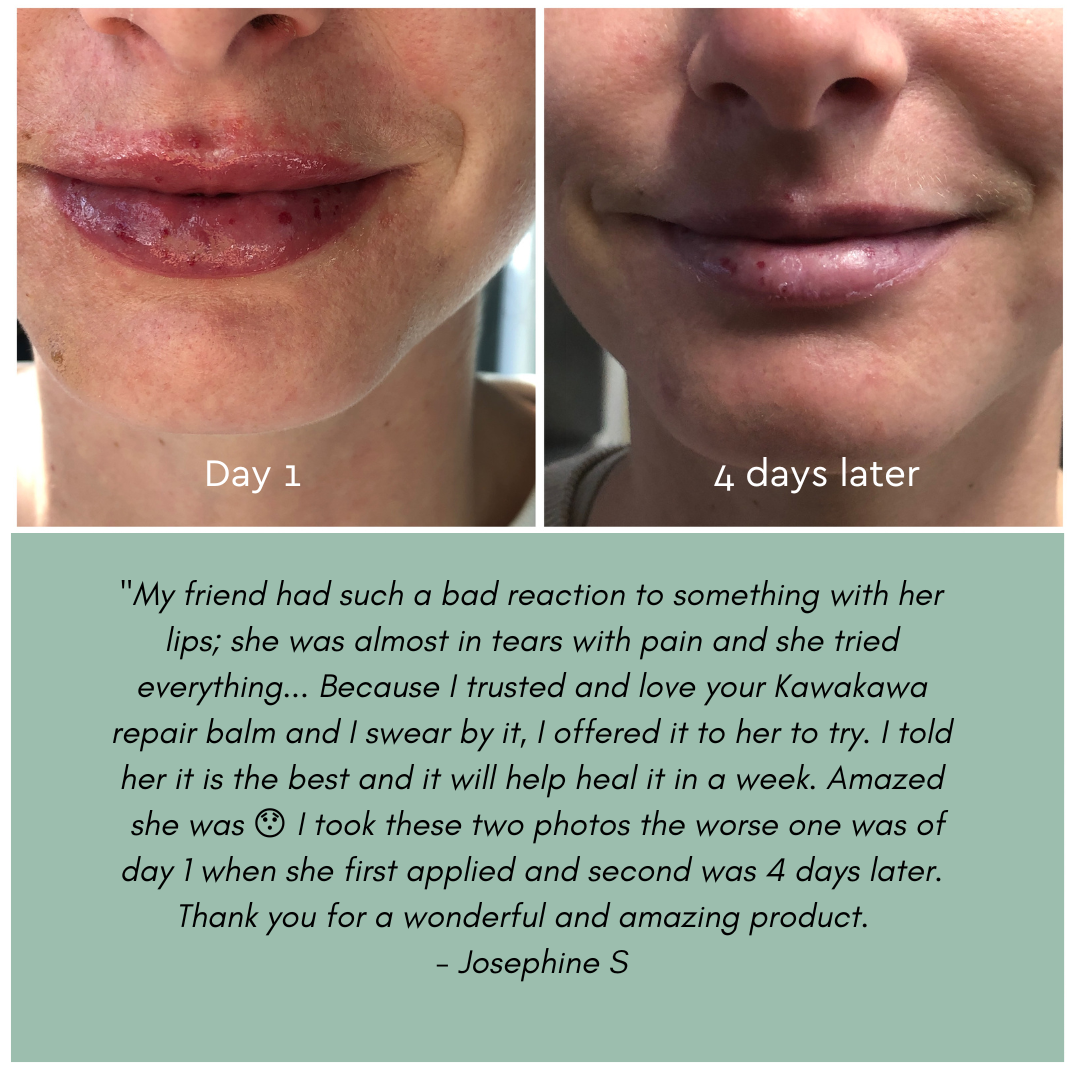
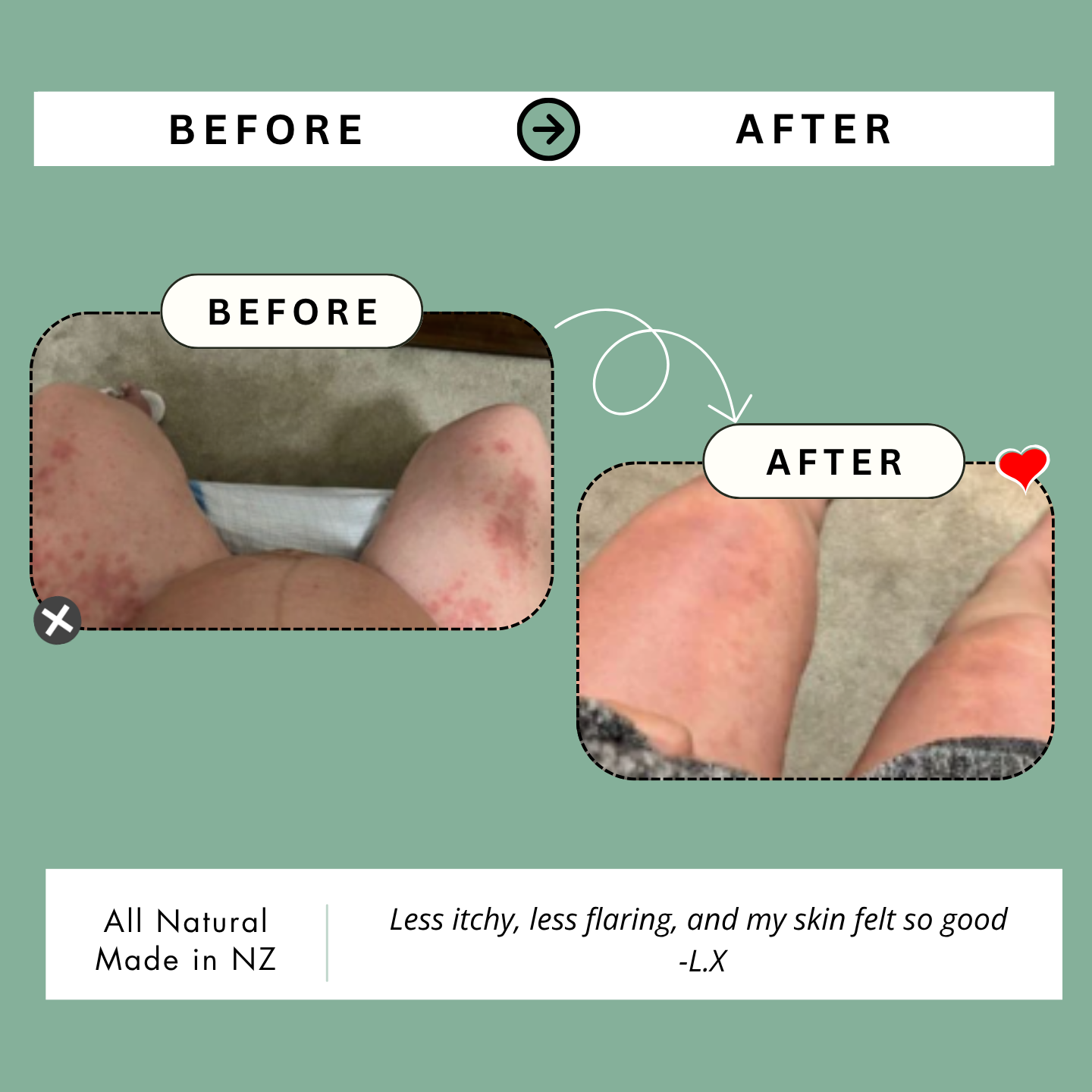


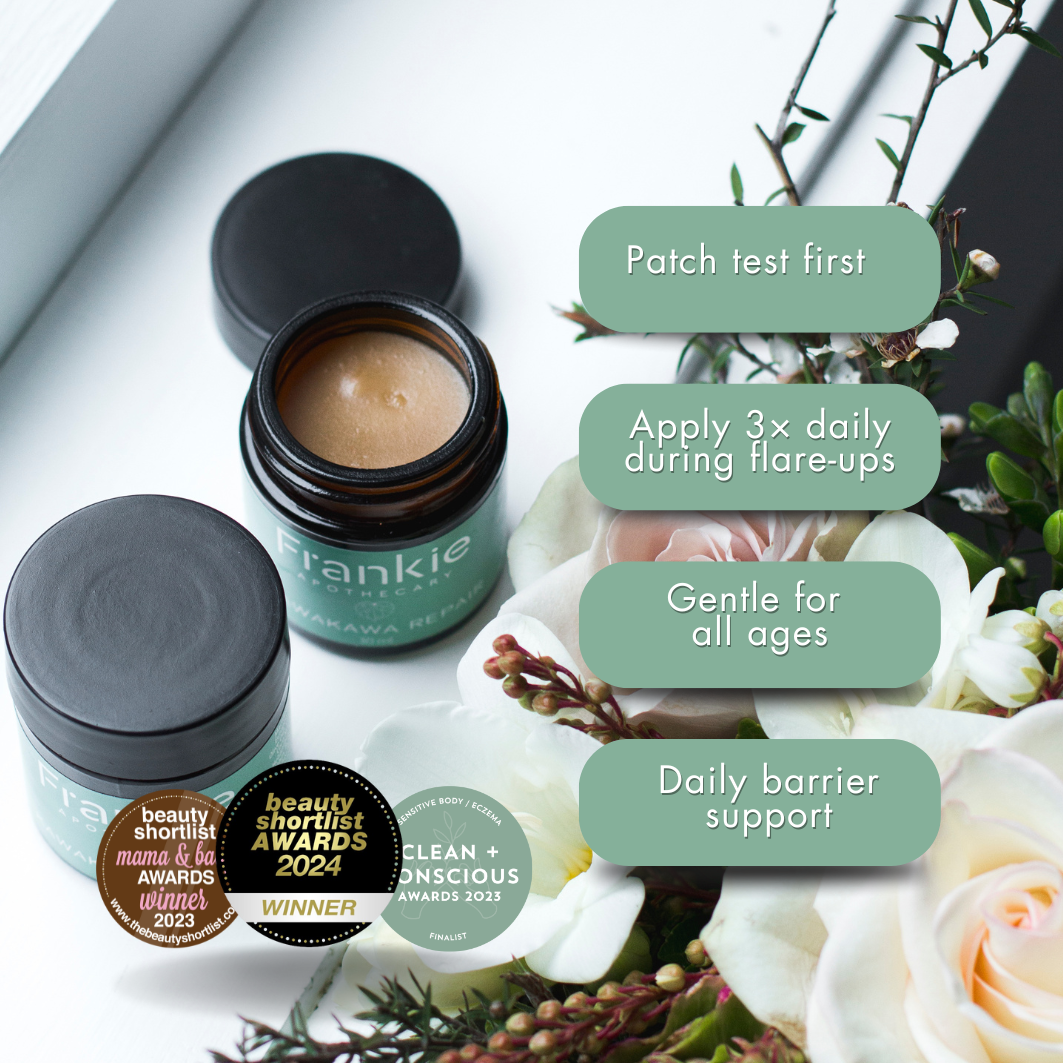
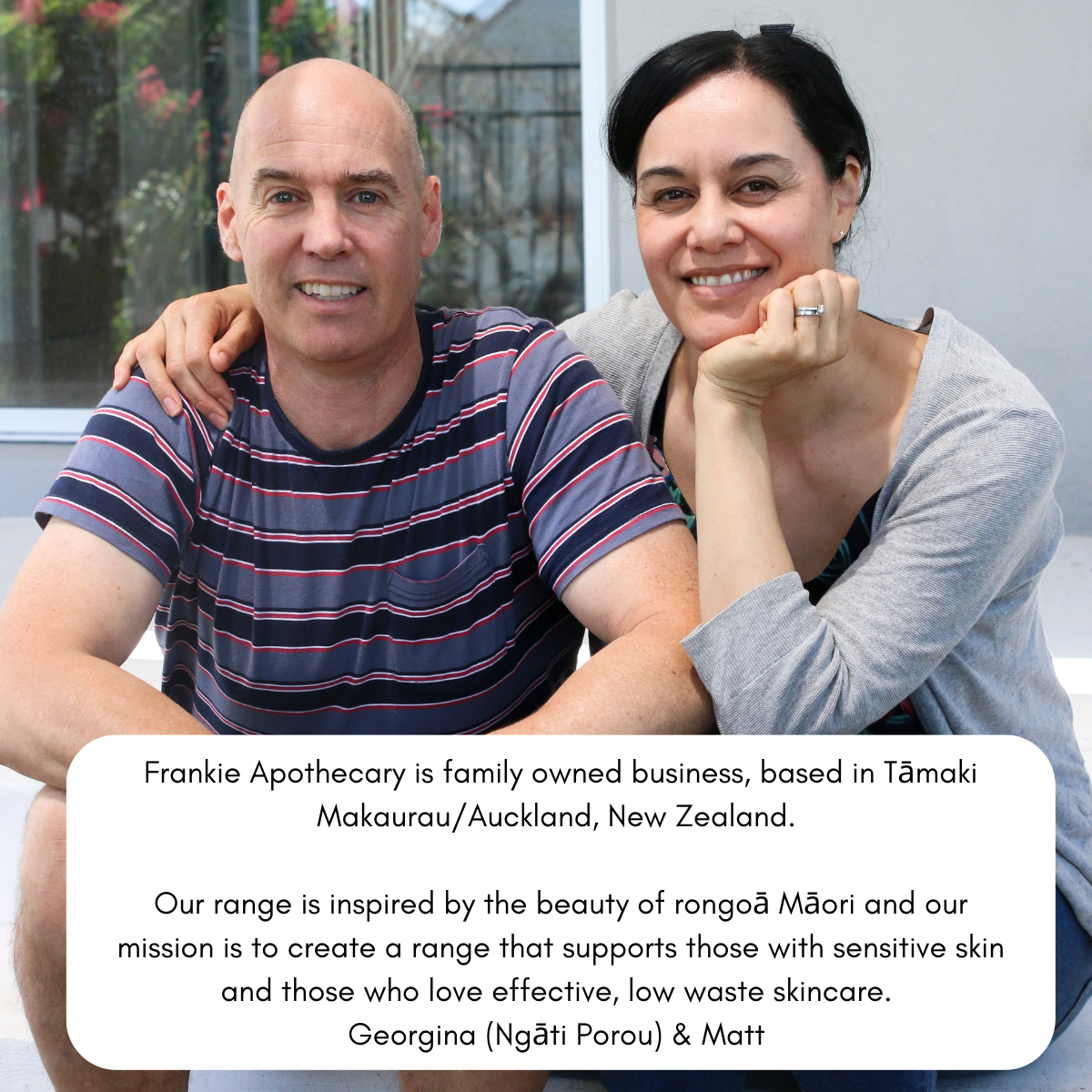

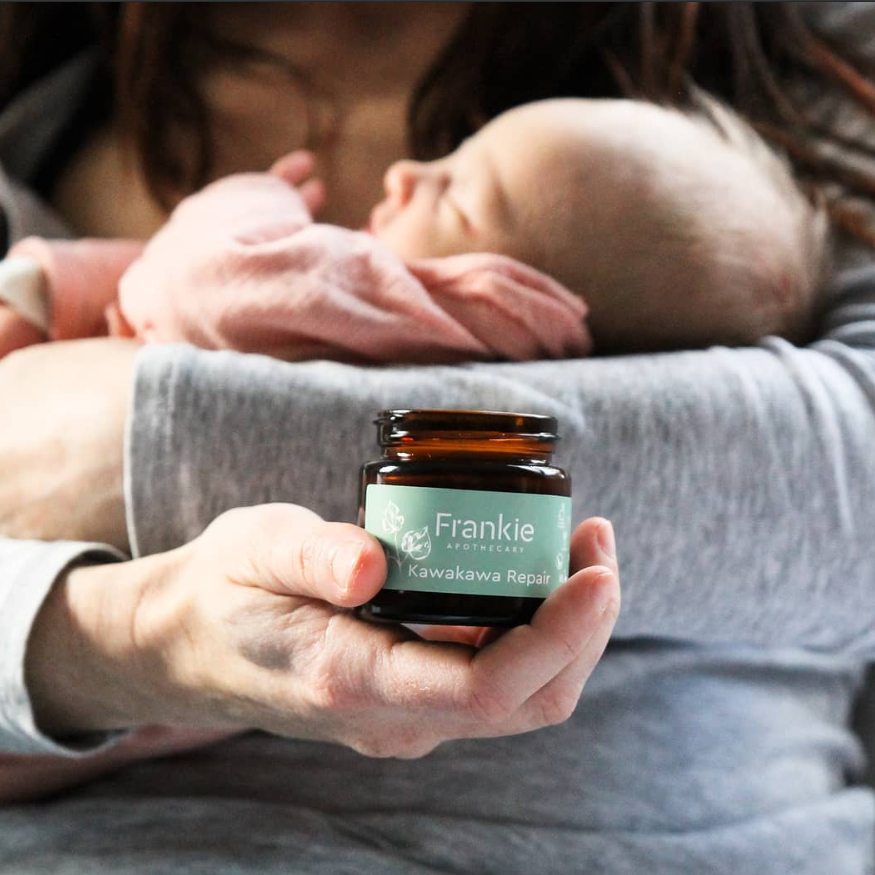

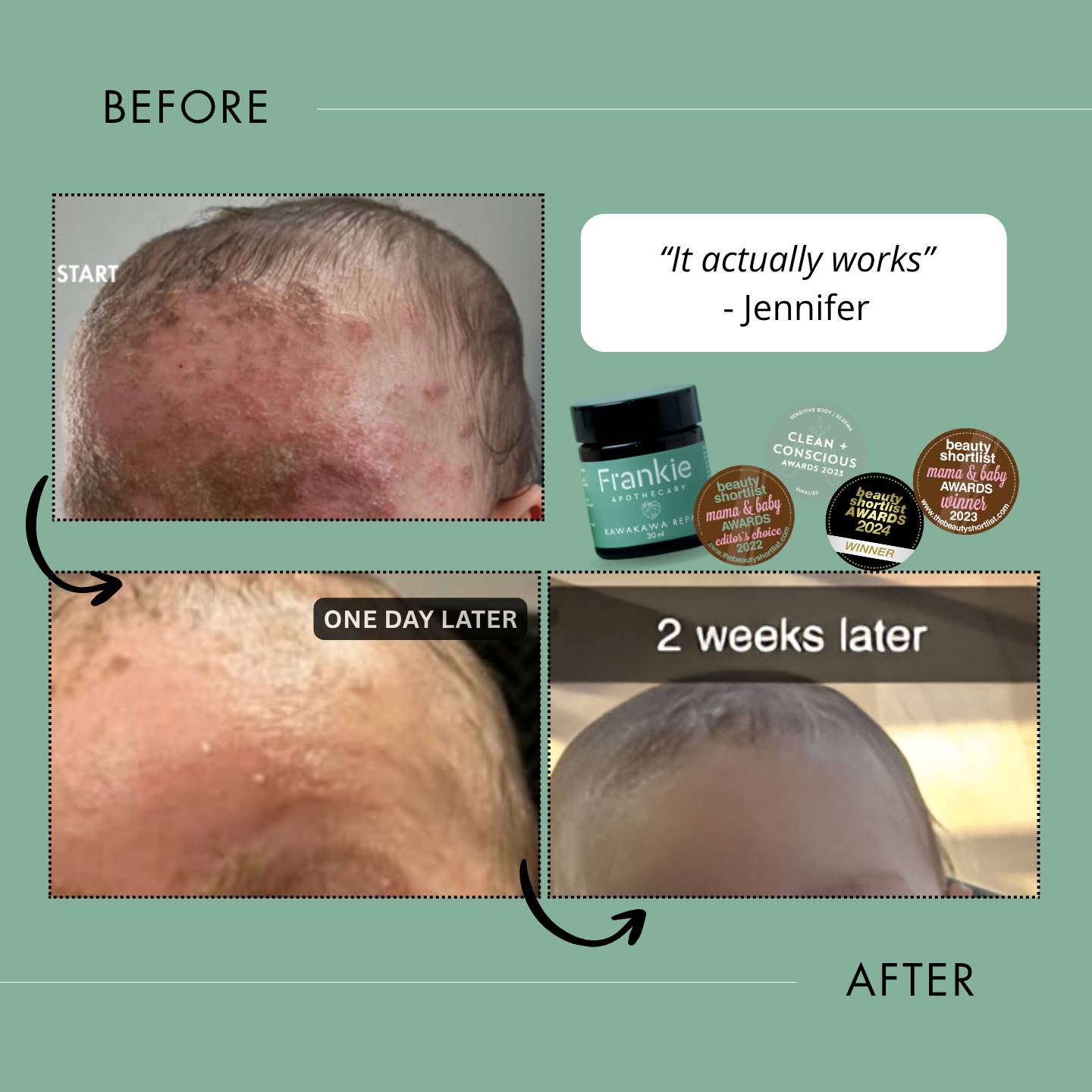



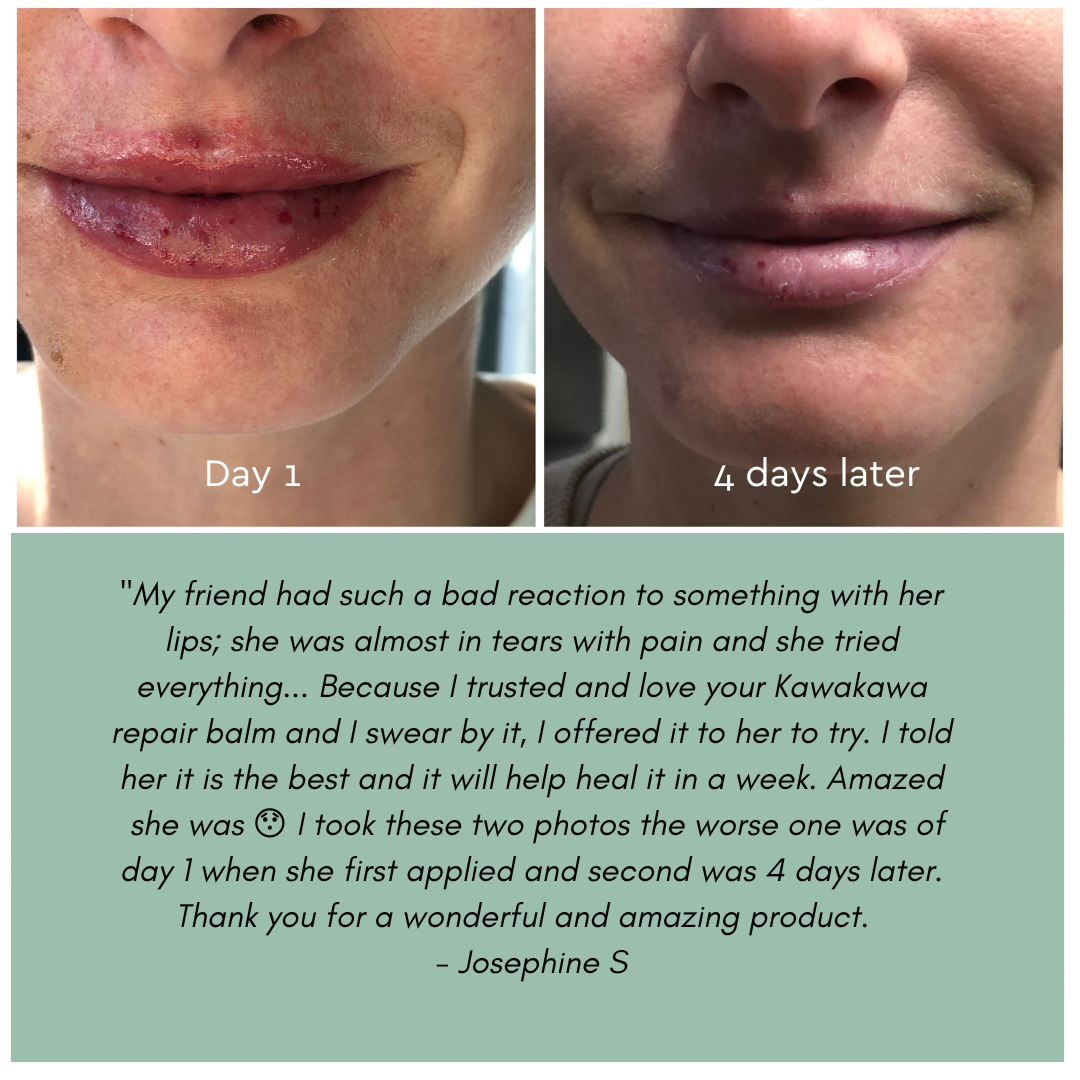


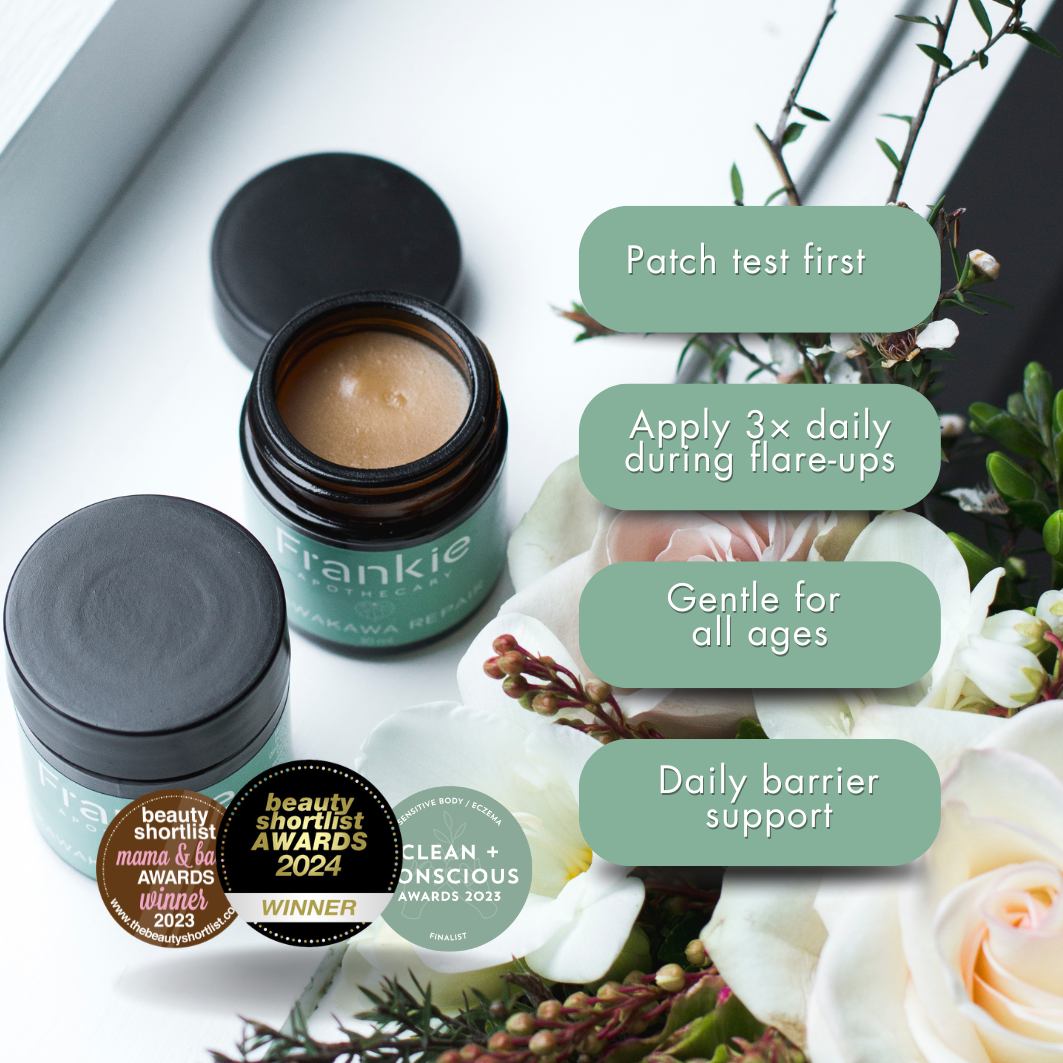





2 comments
Hi Pauline,
We have had great reviews on the Kawakawa Repair balm with plenty of people emailing us or leaving reviews on our website to say how much it has helped to soothe sensitive skin and eczema. It is natural without preservatives and was initially created for babies and toddlers so is very safe. A number of Mums have also told us they were able to gradually reduce reliance on steroids creams as well or eliminate their use over time. It’s always a good idea to keep your GP in the loop if they’re helping to manage the condition.
It is important that the repair balm is applied 3x a day at regular intervals for several days to allow the actives in the Kawakawa to work and for the balm to prevent moisture loss. This also helps to soothe the itch. Being a water-free balm it’s quite heavy and will also help as a protective barrier, protecting the skin from environmental irritants. If your son is reliant on steroid creams, we recommend starting the Kawakawa Repair along with the cream from the doctor. And while it may be obvious, when applying, just make sure your hands are clean to keep the area as clean as possible.
Hope that helps.
Hi I’ve just bought your Kawakawa balm, first time user (waiting for it to arrive). My son has suffered from a severe form of eczema on his neck area, for over six weeks. It’s gone through very inflamed red patchy skin with thickened skin and has had a dose of antibiotics to fight an infection that developed. I’m at a lost as all the steroids the doctors have prescribed has not helped. I know all cases of eczema is very different but what’s the success rate with the use of Kawakawa balm on sever eczema? Do you have an real life testimonials and examples to prove it’s use? I just need to find an answer for my poor son. Kind regards Pauline